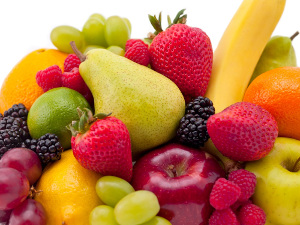Canada: Record cherry exports expected from BC this season

The opening of the Chinese market in 2014 for British Columbia cherries has been a key driver of increased plantings of late, and an industry body is anticipating record exports from the province this campaign. 
BC Cherry Growers president Sukhpaul Bal told Fresh Fruit Portal harvesting activities had kicked off at a more traditional start period of mid-June, following two consecutive early seasons.
A major grower cooperative in the region, BC Tree Fruits, in May announced it was expecting a record 12 million pounds of cherries this season.
"It looks to be a very nice size crop, but it’s not a bumper crop whereby the trees are really loaded with fruit," Bal said.
"I think it’s going to be just a touch above average. I’m expecting a record numbers of exports - we’ve had a lot of land planted into cherries recently with China opening up to us a few years ago."
Several hundred acres of orchards have been planted in the north of the Okanagan Valley in the last year alone, according to Bal.
He estimated in the region of 40-50% of the crop could end up being exported to China this season.
"China’s definitely going to be our main market," he said.
"We’ve had a lot of buyers the last few months coming through the [Okanagan] Valley looking for product, and the feedback I’m getting is that they can’t get enough. We just don’t have enough volume."
He emphasized not all growers were focused on China, with many also shipping to the U.K.
"We’re not too reliant on one market, but China is one of the strongest markets and it is continuing to grow as we make contact with more areas throughout China," he said.
"We’ve been mainly in Shanghai, Guangzhou and Beijing, but there’s other regions in China that are emerging and looking for nice quality fruit.
"It’s almost like getting access to a new country, when you find another city in China which could have the population of some countries."
Typically around 25-30% of production stays in Canada and the U.S., although Bal noted this proportion changed depending on the year.

Historic cherry prices at wholesale markets in the U.S. - Source: Agronometrics
"If we’ve got really nice quality fruit and export markets are strong, we tend to lean toward the export markets just because of the prices we need to get for our fruit," he said.
"With the cost structure, we’re dealing with some of the most expensive farmland in the world per acre I think, so we’ve got to get a high price for our product."
From a marketing perspective, the representative said everything had started off well this campaign, both at home and abroad.
Bal added most of the crop in the north of the Okanagan Valley would be harvested once the U.S. state of Washington was wrapping up its campaign.
"It looks like promising season," he said.
"It was wet early in the season, but the cherries don’t mind that. The trees like a lot of water, so we didn’t have to irrigate too much early on, and now we’re in a heatwave, low to mid-30s, at least for the next week or so.
"Around August 25 the majority of the northern part will be finished. Then some plantings at higher elevations could probably push into early September."
Extending the season
BC Fruit Growers Association (BCFGA) president Fred Steele said the cherry industry was becoming increasingly knowledgeable about elevation plantings and were hoping to extend the harvest period.
"There is the mainstay where we grow now and we know when we're going to have a crop, but what we're doing now is going up one higher so we can have a two-week delay with the same variety," he said.
"Pretty soon we’re going to extend the five or six-week cherry-growing season from the first week of June to the Labor Day weekend [in early September]."
As for other major British Columbia tree fruit crops, Steele said it seemed there would be good volumes of apples, with the season running approximately one week to 10 days late.
Peaches were also running a little late and production was anticipated to be lower than last year, he explained.
He said apples were the province's biggest tree fruit crop, followed by cherries, peaches and pears. However, he noted cherries were catching up with apples as growers were continuously planting more.
Photo: www.shutterstock.com








































